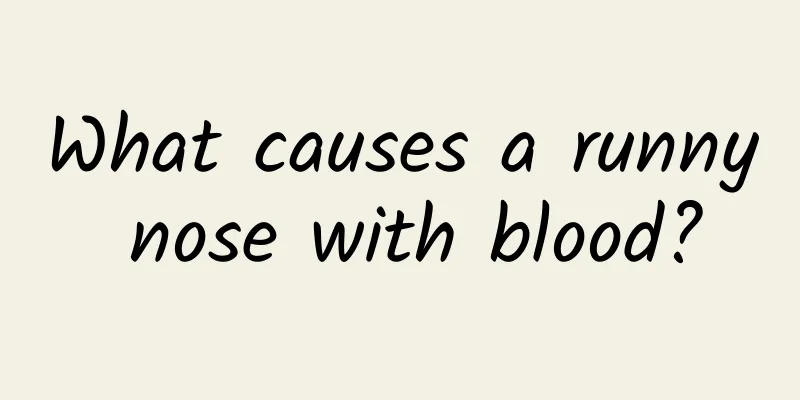What to do with postpartum pelvic effusion and how to treat pelvic effusion

|
Pelvic effusion is a common gynecological disease in women, which is characterized by the presence of inflammatory exudate in the pelvic cavity. Pelvic effusion can be divided into physiological pelvic effusion and pathological pelvic effusion according to pathological factors. The treatment of female pelvic effusion can be started from many aspects such as traditional Chinese medicine, physics, and medicine. 1: Classification of pelvic effusion1: Physiological pelvic effusion Physiological pelvic effusion refers to purely physiological pelvic effusion without external causes. For example, during menstruation, a small amount of menstrual blood is not discharged and remains in the lowest point of the abdominal cavity - the pelvic cavity; for example, during ovulation, some ovarian secretions are discharged into the pelvic cavity through the fallopian tubes, forming pelvic effusion. Physiological pelvic effusion is a normal physiological phenomenon in women. If a woman has pelvic effusion, it means that her fallopian tubes are unobstructed. 2: Pathological pelvic effusion Pathological pelvic effusion is generally caused by inflammation, such as endometritis or adnexitis, pelvic inflammatory disease. The inflammatory stimulation leads to excessive exudate and retention in the pelvic cavity. Pelvic fluid will accumulate over time and slowly increase in size, making treatment more difficult and more expensive. Pathological pelvic effusion is related to menstrual hygiene, sexual hygiene and personal medical history. There is a high possibility that pelvic effusion is caused by uncured gynecological inflammation. 2. Treatment of pelvic effusion1: Traditional Chinese medicine treatment of chronic pelvic inflammatory disease is mostly of the damp-heat type, and the treatment principle is to clear away heat and dampness. The main function of the prescription is to promote blood circulation and remove blood stasis. The prescription uses: Salvia miltiorrhiza 18g, Red Peony Root 15g, Costus Root 12g, Peach Kernel 9g, Honeysuckle 30g, Taraxacum Mulberry 30g, Poria 12g, Moutan Bark 9g, and Rehmannia Glutinosa 9g. If the pain is severe, add 9g of Corydalis yanhusuo. Some patients are of the cold stagnation and qi stagnation type, and the treatment principle is to warm the meridians and dispel the cold, promote qi and activate blood circulation. Guizhi Fuling Decoction is often used with modifications. For those with qi deficiency, add 15g of Codonopsis pilosula, 9g of Atractylodes macrocephala, and 15g of Astragalus membranaceus. 2: Other drug treatments: When using anti-inflammatory drugs, you can also use 5 mg of α-chymotrypsin or 1500 U of hyaluronidase at the same time, injected intramuscularly once every other day, 5 to 10 times as a course of treatment, to facilitate the absorption of adhesions and inflammation. The medication should be discontinued if local or systemic allergic reactions occur in individual patients. In some cases, antibiotics are used simultaneously with dexamethasone, 0.75 mg of dexamethasone is taken orally 3 times a day, and the dose should be gradually reduced when the drug is discontinued. 3: The benign stimulation of physical therapy and warmth can promote local blood circulation in the pelvic cavity. Improve the nutritional status of tissues and enhance metabolism to facilitate the absorption and disappearance of inflammation. Commonly used ones are shortwave, ultrashort wave, iontophoresis (various drugs such as penicillin, streptomycin, etc. can be added), wax therapy, etc. 4: General treatment can relieve patients' mental concerns, enhance their confidence in treatment, increase nutrition, exercise, pay attention to the combination of work and rest, and improve the body's resistance. 5: Surgical treatment is suitable for lumps such as hydrosalpinx or tubo-ovarian cysts; surgical treatment is also suitable for those with small infection foci and repeated inflammation. The principle of surgery is complete cure to avoid recurrence of residual lesions. Unilateral oophorectomy or radical hysterectomy plus bilateral oophorectomy is performed. For young women, ovarian function should be preserved as much as possible. The effect of single therapy for chronic pelvic inflammatory disease is poor, and comprehensive treatment is appropriate. 3. Women should pay attention to menstruation and pregnancyMaintain hygiene during delivery and postpartum period to prevent infection. Exercise, strengthen your physical fitness, increase nutrition, pay attention to the combination of work and rest, and improve the body's resistance. |
<<: How to check for pelvic effusion?
>>: What to do if shingles itches? Traditional Chinese medicine remedies are effective
Recommend
What are the dangers of glutamine?
Glutamine is made from precious Chinese herbal me...
What happens if you drink alcohol while getting a face-lift injection?
The purpose of a face-slimming injection is to ma...
Diet for people with diabetes
It is best for diabetics to eat less foods with h...
yawning tears
Tears are a normal reaction of our eyes, and usua...
What causes pain on both sides during pregnancy?
Many female friends who have just become pregnant...
What are the signs of a baby's language explosion?
Children's language development will go throu...
Does pumpkin help with bowel movements?
Pumpkin is a relatively common food ingredient, u...
The efficacy and function of Cistanche deserticola
Cistanche, known as the "desert ginseng"...
The bone in the middle of the chest hurts when you press it
There is a bone in the chest that is symmetrical ...
The efficacy and function of vinegar garlic
Vinegar garlic is a food pickled with vinegar. Du...
Can I eat leeks when I’m pregnant?
Leek is a very common ingredient in our daily lif...
What to do if your hair pores are clogged
The harm caused by blockage of hair and pores is ...
The pulse condition and main diseases of thin pulse
The pulse condition of a thin pulse will be diffe...
Dull pain in right buttock
There are many reasons for the dull pain in the r...
How to relieve baby’s bloated stomach?
In life, many babies have bloated stomachs. Babie...









